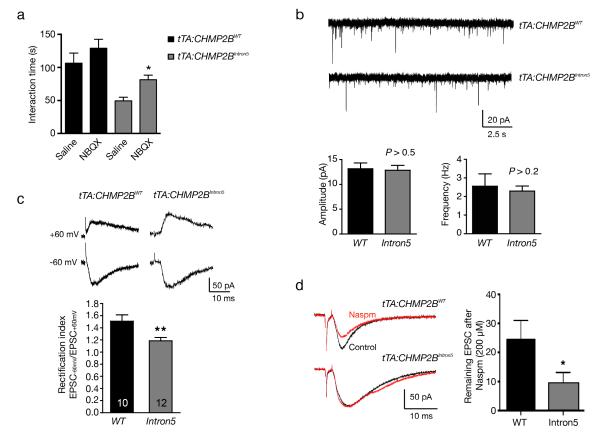Figure 3.
Functional consequences of altered AMPAR composition in tTA:CHMP2BIntron5 mice. (a) Behavioral consequences of AMPAR inhibitor NBQX in tTA:CHMP2BWT and tTA:CHMP2BIntron5 mice at 8 months of age (n = 10 for all groups except n = 13 for tTA:CHMP2BWT saline; *: P < 0.05 by two-sided Kruskal-Wallis test corrected for multiple comparisons). (b) Whole-cell patch-clamp recordings of mEPSCs in pyramidal neurons in the mPFC. The amplitude and frequency of these miniature events were compared between tTA:CHMP2BWT mice (n = 11) and tTA:CHMP2BIntron5 mice (n = 12, P > 0.1 by two-sided t test). (c) The rectification index, calculated as EPSC-60/EPSC+60, for AMPAR-mediated EPSCs, was measured (n = 10 for tTA:CHMP2BWT mice and n = 12 for tTA:CHMP2BIntron5 mice; **: P < 0.01 by two-sided t test). (d) Decreased sensitivity of evoked EPSCs to Naspm (200 μM) inhibition in pyramidal neurons expressing CHMP2BIntron5. Representative EPSC traces at −60 mV before (Control) and after Naspm application are shown on the left (n = 8 mice for tTA:CHMP2BWT and n = 9 for tTA:CHMP2BIntron5. *: P < 0.05 by two-sided t test). Mice used in b-d were 15-16 weeks of age. All values are mean ± s.e.m.

